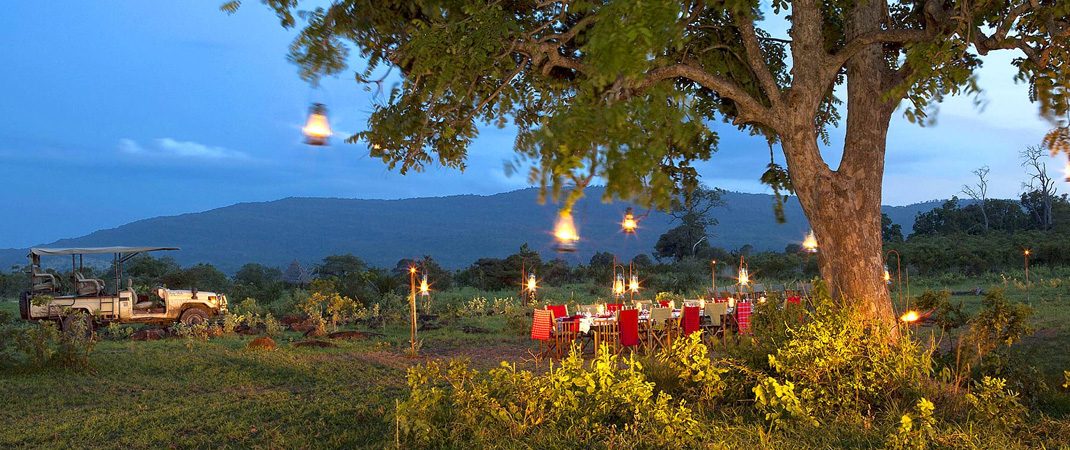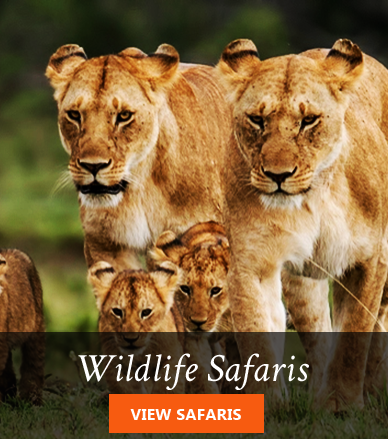This is Africa’s largest game reserve at 45,000 square kms. Selous Game reserve is almost 2 times the size of Serengeti, 3 times the size of Kruger National park, and 16 times the size of Kenya’s Masai Mara Game reserve. This reserve is named after the British explorer Frederick Courteney Selous. It is also one of the 3 World Heritage sites found in Tanzania. Rufiji River, the largest river in Tanzania, splits Selous Game reserve into 2 different sections – the northern part and the southern part. The Rufiji river also forms a complex network of channels, lakes and swamps that create one of the most outstanding ecological systems in East Africa.
Northern Selous is the areas set aside for photographic safaris, as opposed to hunting safaris that is allowed in the southern part. This area takes up just about 5% of the entire reserve. And almost all the exclusive safari camps are located in the northern section. The south of Rufiji River takes up the lion’s share of the reserve. It is divided into several hunting blocks each about 1000km squared. Hallmark Travel Planners does not offer or support hunting safaris though.
Getting to the Reserve
For tourists, there are daily flights from the major tourist hubs in Tanzania, namely Arusha, Dar and Ruaha. Light aircrafts are used to ply the routes, taking about 45 minutes from Dar es Salaam and 1 hour 30 minutes from Ruaha.
Selous Safari Camps and Lodges
Most of the safari camps that feature Selous Game reserve are within the reserve itself. And there are only a very small number of eco – friendly safari camps. This means at any one time, there is only a smal number of visitors in the reserve. In fact, it is possible to not come a across another safari vehicle during safari drives as the camps are spread out. Selous is also not subject to the rules and regulations of Tanzania National Parks Authority. For this reason, the safari experience and general bush experience is richer.
The eastern part of Selous Reserve of the best safari experience as it has a higher density of wild animals. Lake Manze Camp, Selous Impala Camp and Siwandu Camp, are known to be especially good for lion and wild dog sightings. The rainy season makes Selous so wet that some roads become impassable that some camps close this season – between April and May.
Safari Activities in the Reserve
This reserve has a sufficiently wide variety game viewing activities. Tourists can do game drives on vehicle, on foot and by boat. Safari by boat along the Rufiji river, lakes and the channels present close encounter with both the land animals and water animals. One get close encounters with elephants, crocodile and even hippos.
Guided walks are offered by almost all the safari camps in Selous to persons aged 12 years and above (Some lodges say 16 years). While on these bush walks, together with armed rangers, there is real possibility as it happens more often than not, of meeting with big game of the african bush such as; elephant, buffalo and even lion. Game drives on open side safari jeeps are very rewarding especially towards the end of the dry season, when large mammals concentrate around the 5 lakes in Selous.
The Wildlife
The prodigiously large mammal populations found here, support the claim that the Selous is the greatest surviving African wilderness. Buffalo numbers are estimated at 120,000 –150,000, and the reserve’s 40,000 hippo and 4,000 lion are probably the largest such populations on the continent. The Selous also harbors an estimated 100,000 wildebeest, 35,000 zebra, 25,000 impala and significant herds of giraffe, greater kudu, waterbuck, bushbuck, Lichtenstein’s hartebeest and eland. It is also one of the most important sanctuaries in Africa for the endangered black rhinoceros, African wild dog, sable and puku antelope. Around half of Tanzania’s elephants are found in the reserve as well as huge populations of leopard, cheetah, crocodile and spotted hyena to name just a few of the big game species found here.
More than 440 bird species have been recorded in the Selous. On the lakes you’ll find pink-backed pelicans, African skimmers and giant kingfishers. The sandbanks are home to carmine and white-fronted bee-eater colonies whilst pairs of fish eagle, palmnut vulture, ibises and palm swifts nest in the borassus palms.



